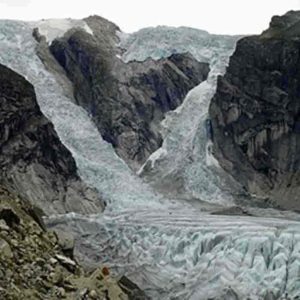
A University of Oklahoma-led study recently found that explosive volcanic eruptions were at least 3-8 times more frequent during the peak of the Late Paleozoic Ice Age (~360 to 260 million years ago). Aerosols produced by explosive volcanism helped keep large ice sheets stable, even when CO2 levels increased, by blocking sunlight. But the volcanic emissions also may have started a cascade of effects on the climate system that resulted in additional CO2 removal from the atmosphere.
“The lessons from this period shed light on a spectrum of outcomes as we move forward on Earth with increasing levels of CO2. Stratospheric aerosol geoengineering increasingly is discussed as a way to mitigate climate change today, but the intended outcomes may lead to unintended consequences,” said Gerilyn (Lynn) S. Soreghan, professor and director of the School of Geology and Geophysics, Mewbourne College of Earth and Energy.
Earth’s climate has fluctuated between icehouse and greenhouse states that are defined by the presence or absence of ice sheets. During the LPIA, frequent explosive volcanism is thought to have caused increased reflection of sunlight, and increased atmospheric acidity, enhancing the reactivity of iron in abundant volcanic ash and glacially generated mineral dust, thus strengthening the climate impact of volcanism. Stimulation of phytoplankton growth in the oceans owing to iron fertilization contributed to CO2 drawdown, helping to sustain icehouse conditions.
In this study, geologic data were integrated with radiative calculations to explore the hypothesis that the onset, acme and prolonged extent of the LPIA was driven by unusually intense explosive volcanism prevalent during the tectonic assembly of Pangaea, operating in concert with CO2 and indirect forcings related to volcanism. Data on volcanic aerosols were compiled globally over ~400 to 200 million years ago.
Explosive volcanism during this time interval peaked approximately 310-290 million years ago, right on time to keep climate cool and support CO2 uptake in the ocean as other CO2 sinks like weathering of tropical mountains and verdant tropical rainforests decreased owing to increasingly arid conditions across Europe and North America.
Note: The above post is reprinted from materials provided by University of Oklahoma.










